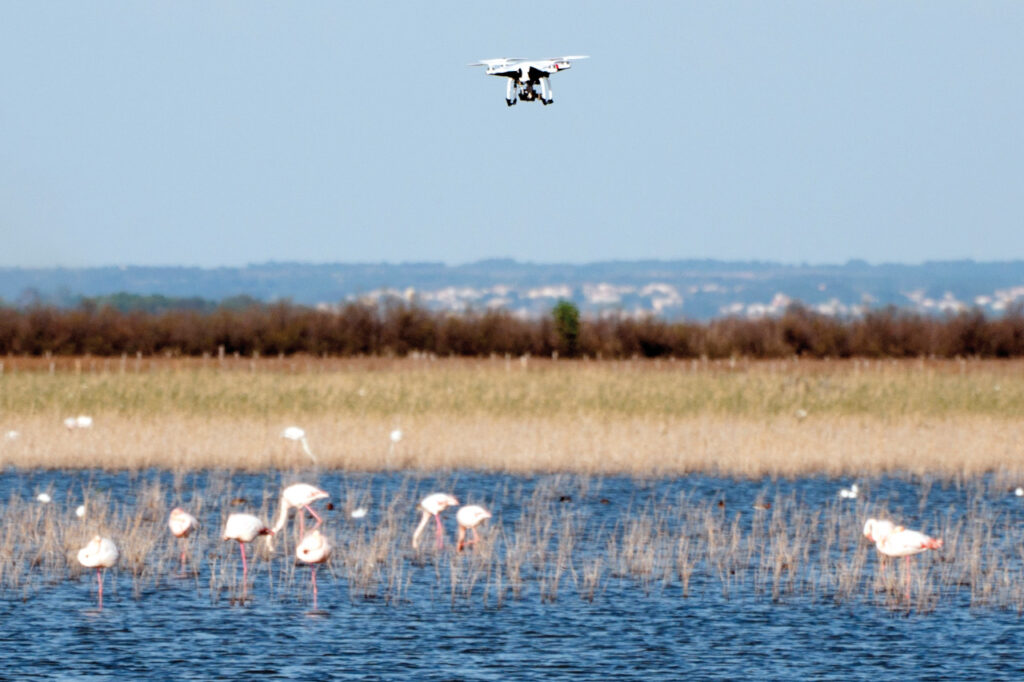[LUM#1] Bird Drone
How can we survey wild bird populations without disturbing them? Researchers at the Center d'écologie fonctionnelle et évolutive have found the solution...

It's a strange bird hovering over the ponds of the Camargue: four motorized wings, metallic plumage and a camera for an eye. A drone that hums softly a few meters above the pink flamingos. Its mission: to count the birds. Ecologists have snapped up this little flying machine, which enables them to take aerial photos to facilitate population censuses. More accurate than binocular counts, and less expensive than using planes or helicopters, the drone has it all. " Using drones is all very well, but it's essential to do so without disturbing the animals ", warns David Grémillet. The researcher from the Centre d'écologie fonctionnelle et évolutive has conducted the very first full-scale study to assess the impact of these aircraft on birds.
Respecting the well-being of birds
"We wanted to find out how far we could go without provoking a reaction from them," says Elisabeth Vas. For her Masters internship in Information and Communication Sciences and Technologies for Ecology and the Environment, the young woman chose the drone start-up Cyleone. She organized over 200 flights over the ponds of the Camargue to study the reaction of barking sandpipers and pink flamingos. "We varied the angle of approach, the speed and the color of the drone. We also tried to get progressively closer to assess the distance at which the birds seemed disturbed by the drone's presence.
The results? To their great surprise, the researchers were able to approach their flying machine to within 10 meters of the flamingos without them showing the slightest sign of stress. " Probably because the drone doesn't look like one of their predators ," says Elisabeth Vas. " Only the vertical approach, directly above the group, made them turn their heads, as this is their blind spot," adds David Grémillet.
However, the researchers point to the need for further studies to assess the birds' reactions more accurately. "It 's possible that they were stressed without us realizing it, to verify this we would need to measure more precise parameters such as their heart rate and stress hormone levels," warns Elisabeth Vas, who also recommends extending the experiment to other species.
A host of applications in prospect
Thanks to the approach protocols thus established, ecologists will be able to exploit all the possibilities offered by the drone - and there are many: counting seabirds nesting in hard-to-reach cliffs, counting eggs in nests, reading rings to identify individuals, monitoring migrations... all while respecting the animals' well-being.
Read also:
UM podcasts are now available on your favorite platforms (Spotify, Deezer, Apple podcasts, Amazon Music...).